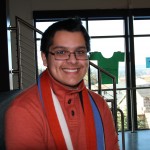
By Theresa Goffredo, Herald Writer, http://www.heraldnet.com
Pepper’s life is celebrated in the film documentary “Pepper’s Pow Wow,” showing at 6 p.m. Thursday at the Hibulb Cultural Center on the Tulalip Reservation, 6410 23rd Ave. NE, Tulalip.
Admission for adults is $10. For more information call Hibulb at 360-716-2600 or online atwww.hibulbculturalcenter.org/.
Sandy Osawa will present the one-hour film. Osawa, a Makah, is the first American Indian filmmaker to produce on a national broadcast scale and has made 16 broadcast films.
She and her husband, cameraman and editor Yasu Osawa, will answer questions following the film.
Pepper’s heritage is Creek and Kaw and the film shows a rare, personal glimpse into the life of this jazz innovator, who made his name on the European stage rather than back home in America.
The film pays tribute to Pepper’s life along with sharing his music, including a recording of his grandfather, Ralph Pepper, singing the original chant that became the basis for “Witchi Tai To.”
Pepper played the tenor saxophone and the film opens with him performing the song “Caddo Revival” during the Kaw Pow Wow in Oklahoma, where Pepper grew up.
In the film, Pepper is recorded as saying music created by American Indians “comes directly from the ground, from the earth, from the four directions and the music is a healing force.”
Along with documenting Pepper’s life, the film delves into the birth of the jazz-rock fusion movement of the mid-1960s. The film includes footage of Pepper’s band, the first jazz-rock fusion band called The Free Spirits.
Filmmaker Osawa hopes that Pepper’s life “can be a metaphor for many indigenous people who are struggling to walk in two worlds with one spirit,” she said in a statement.
“Pepper’s Pow Wow” has been shown on the Public Broadcasting Station with funding by the Independent Television Service. Osawa’s films are available at www.upstreamvideos.com.
Theresa Goffredo: 425-339-3424; goffredo@heraldnet.com.














